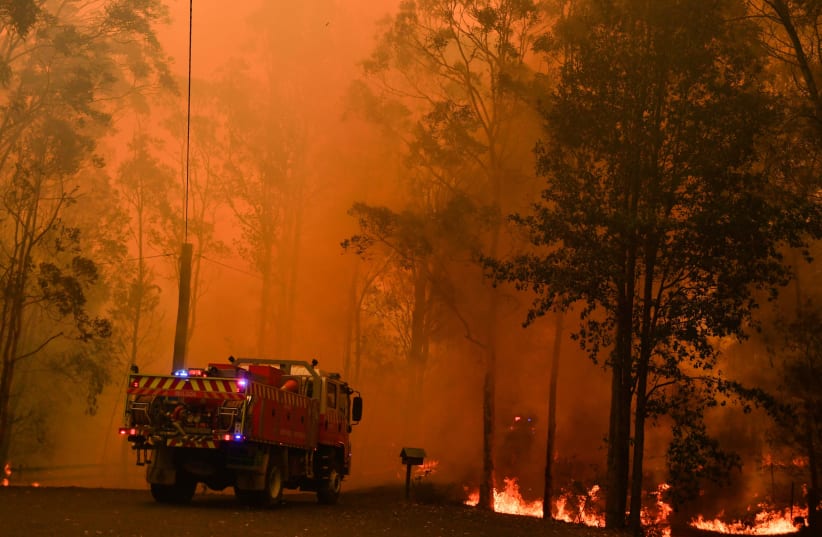- Click on links to see maps posted by emergency services in NSW and Victoria to predict the spread of fires on Saturday
- Temperatures topped 45C (113F) in much of the Sydney metropolitan area, with Penrith recording a high of 48.9C (120F) according to the BOM. Canberra, the national capital, recorded a temperature of 44C just after 4 p.m., which the chief minister said was a record for the territory.
- As the fires have flared, many towns have been isolated as major and minor roads are closed. Some fires are generating their own storm systems, which create the risk of lightning strikes generating new fires.
- A late southerly wind change on Saturday dramatically lowered temperatures, but also brought wind gusts of 70-80 km per hour (43-50 miles per hour) that caused some major fires near the border of Victoria and New South Wales states to merge and strengthen.
- In South Australia, two people died on Kangaroo Island, a popular holiday spot not far off the coast. South Australian Premier Steven Marshall said more than 100,000 hectares (247,000 acres) have burned there, about one-quarter of the total area.
- Six people remain unaccounted for in Victoria, Premier Andrews said on Saturday, down from 28 reported on Friday.
- The focus on Saturday is preventing more loss of life, authorities said. National parks have been closed and people urged earlier this week to evacuate large parts of NSW's south coast and Victoria's north eastern regions, magnets for holidaymakers at the peak of Australia's summer school holidays.
- Morrison confirmed that his visit to India and Japan scheduled for mid-January had been postponed due to the fires.
- More than 5.25 million hectares (13 million acres) of land has been burnt this fire season.
